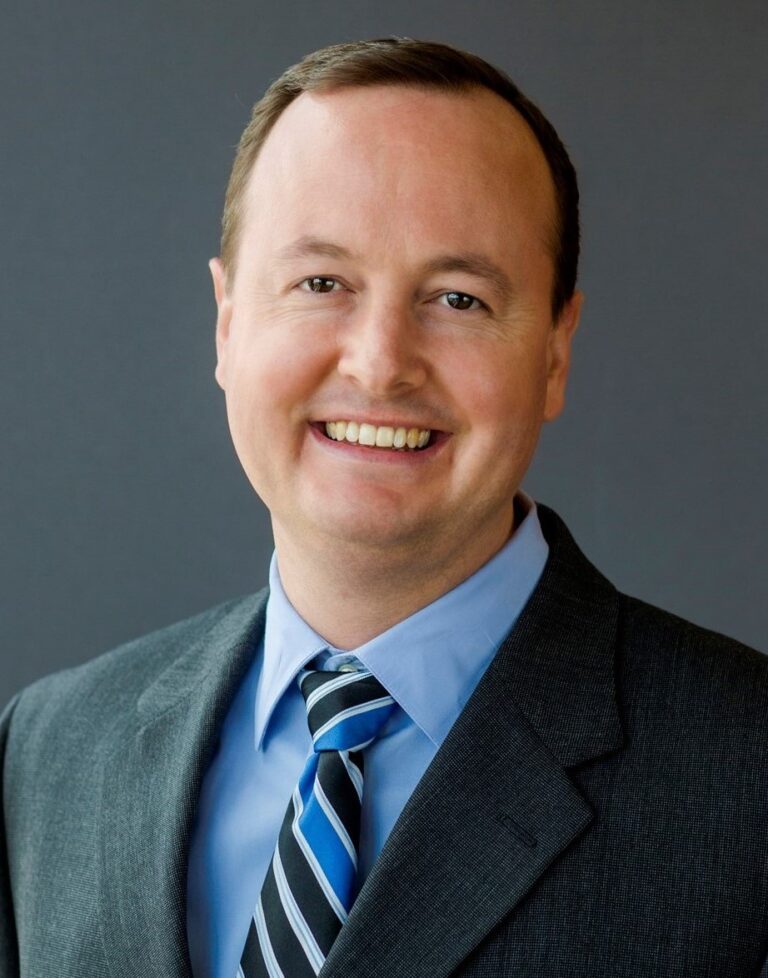Plaintiff’s Preexisting Medical Condition Does Not Always Require The “Substantial Factor” Jury Instruction
From the Desk of Josh Hayward:
Multiple potential causes exist in many negligence cases. A defendant might argue, for example, that a plaintiff’s alleged injury was caused by the plaintiff’s preexisting condition, and not the defendant’s negligence. Jury instructions can be vital in a negligence case; however, when multiple potential causes exist, must a trial court instruct the jury on the “substantial factor” test, or will the standard “but-for causation” instruction suffice?
Claims Pointer:
The Oregon Supreme Court concluded that the “but-for causation” instruction is appropriate for most negligence cases where multiple potential causes exist, including cases where a defendant argues that the plaintiff’s complaints were caused by the plaintiff’s preexisting condition.
Haas v. Estate of Mark Steven Carter, 370 Or. 742, 525 P.3d 451 (2023).
Facts:
Roberta and Kevin Haas brought a negligence claim against Mark Steven Carter after he struck their stopped car. Roberta Haas alleged that, as a result of Carter’s negligence, she suffered injuries to her neck and back, requiring medical treatment, including surgery. Kevin Haas alleged injury to his neck, also requiring medical treatment and surgery.
At trial, medical experts attributed both Roberta and Kevin Haas’s injuries to the collision, but also testified that both Plaintiffs had preexisting conditions that made them more susceptible to injury. In particular, an orthopedic surgeon testified that prior to the collision, “even a sneeze could have made [Roberta] Haas symptomatic,” and a neurosurgeon testified that the injuries Kevin Haas sustained were “not uncommon, and that they frequently occur due to age and degeneration.”
Plaintiffs requested two uniform jury instructions on the issue of causation: (1) a but-for instruction, and (2) a substantial factor instruction. The trial court delivered the but-for instruction but rejected the substantial factor instruction because it thought a substantial factor instruction only applied “when you have multiple actors potentially at the same time.” The court also delivered a “previous infirm condition” instruction, informing the jury that it could find the Defendant liable for the full extent of Plaintiffs’ injuries caused by Carter’s negligence, even if Plaintiffs’ injuries were greater than injuries another person without the previous infirm conditions would have suffered from the collision.
The jury returned a verdict for Defendant.
Plaintiffs appealed, arguing they were entitled to the substantial factor instruction because the jury “was confronted with multiple possible causes of [P]laintiffs’ [injuries]” and should have been given the instruction to determine whether Carter’s negligence “was a ‘substantial or important factor in causing the injuries.’”
Defendant disputed whether evidence existed that multiple causes had acted together to cause Plaintiffs’ injuries and argued that preexisting conditions are not “concurrent causes of injury.”
The Oregon Court of Appeals agreed with Plaintiffs that the substantial factor instruction is not limited to cases where there are multiple tortfeasors, but concluded that a plaintiff’s injury is caused by that plaintiff’s preexisting condition only when the condition “actively contributes to causing the injury.” Plaintiffs had not sufficiently shown a causal link between their preexisting conditions and their injuries, so they were not entitled to the substantial factor instruction.
Law:
The causation element of a negligence claim is purely a factual determination, and “[w]hen a defendant’s negligence is a factual cause of harm to the plaintiff, the defendant is subject to liability to the plaintiff as long as the harm that the plaintiff suffered was a reasonably foreseeable result of the defendant’s negligence.” Lasley v. Combined Transport, Inc., 351 Or. 1, 6-7, 261 P.3d 1215 (2011) (citing Fazzolari v. Portland School Dist. No. 1J,303 Or. 1, 17, 734 P.2d 1326 (1987)).
Whether a defendant’s negligence is one of many potential causes of a plaintiff’s harm is typically determined by the but-for test, which asks whether a plaintiff’s injury would not have occurred but-for the defendant’s negligence. See Joshi v. Providence Health System of Oregon Corp., 342 Or. 152, 161, 149 P.3d 1164 (2006) (quoting W. Page Keeton, Prosser and Keeton on the Law of Torts § 41, 265-68 (5th ed. 1984)). Causation is established if the plaintiff’s injury would not have occurred but-for the defendant’s negligence. Id.
However, but-for causation is not appropriate in all situations. The classic example is where two tortfeasors, operating independently, each start a fire and the fires combine to burn down a plaintiff’s barn. Each fire, on its own, would have been sufficient to burn the barn down. Neither tortfeasor can be said to have caused the plaintiff’s injury under the but-for test because in the absence of either fire, the other fire would have burned down the barn.
In such cases, causation may be proved through the substantial factor test, which asks whether a defendant’s conduct was a substantial factor in producing a plaintiff’s injury. Id. Importantly, the substantial factor test is applicable in this special class of cases and has not supplanted the but-for standard. Id. at 161-62.
Analysis:
In this case, Plaintiffs argued that a trial court must give the jury a substantial factor instruction whenever there is evidence of multiple causal factors, or multiple tortfeasors, in a negligence case. Moreover, Plaintiffs argued that a but-for instruction “incorrectly indicates that a defendant cannot be held liable unless the defendant’s conduct was the sole or predominate cause of the plaintiffs’ injuries.”
The Oregon Supreme Court rejected Plaintiffs’ arguments and concluded a trial court is not required to give a substantial factor instruction, as opposed to a but-for instruction, in every multiple causation case. In reaching that conclusion, the court noted that most negligence cases involve multiple causal factors, and that a but-for instruction “does not fail in every multiple causation case, nor does it implicitly tell a jury that it must find that the defendant’s conduct was the sole or predominate cause of the alleged harm.”
The court observed that Plaintiffs had done little to distinguish their case from a case where a but-for instruction would typically be sufficient. Significantly, Plaintiffs did not contend that their case was one of the “exceptional instances” where a substantial factor test would be appropriate—such as the example above where two independent fires combine to burn down a barn. Instead, Plaintiffs merely argued that causation was a difficult concept to apply to preexisting conditions, particularly when considering Defendant’s argument that the preexisting conditions, and not any negligent conduct, caused Plaintiffs’ injuries.
The court acknowledged that preexisting conditions are common, and that such conditions often contribute to a plaintiff’s injury, but that “does not mean that a trial court must use a substantial factor instruction to inform the jury about how to address that issue of multiple causation.” Indeed, in many cases a defendant will argue that her conduct did not cause a plaintiff’s injury and point to some other more likely cause. The court reasoned that preexisting conditions are non-tortious factors, subject to the same analysis as those other potential causes to which defendants may point without triggering application of the substantial factor test.
In reaching its decision, the Oregon Supreme Court explicitly disagreed with the Oregon Court of Appeals on two points: (1) The Oregon Supreme Court did “not agree that a party is entitled to an instruction only if that party adduces evidence or makes an argument material to the requested instruction” because a party may be entitled to an instruction that addresses an opposing party’s argument or evidence; and (2) it did not agree that a plaintiff with preexisting conditions is not entitled to an instruction informing the jury that a defendant’s conduct may be a cause of the plaintiff’s injury even though it was not the only cause, unless plaintiff can show that the preexisting conditions were active causes of injury. The court reiterated that a preexisting condition is a non-tortious factor, and so a preexisting condition may contribute to an injury without being an active cause.
Finally, the court recognized that in practice, distinguishing between a defendant’s argument that a plaintiff’s preexisting condition was the sole cause of the plaintiff’s injury and a defendant’s argument that because of a plaintiff’s preexisting condition, the defendant should not be liable for the full extent of the plaintiff’s injury, even if the defendant’s conduct caused the injury—which would violate the “eggshell skull” rule—might be difficult for a jury. However, the court concluded a but-for instruction on causation and a previous infirm condition instruction on damages, both of which the trial court gave in this case, would be sufficient to keep the causation question separate from the damages calculation.
Based on this analysis, the court held that the trial court did not err when it declined to give a substantial factor instruction.
Big Picture:
But-for causation remains the relevant test for most negligence cases with multiple causal factors. In situations where a plaintiff’s preexisting condition was a causal factor in the plaintiff’s injury, litigants should review proposed jury instructions closely to ensure the jury understands the relationship between causation and damages. The court suggested the following clarifying instruction, which future litigants should consider: (1) even if the jury finds that a plaintiff’s preexisting conditions were a cause of the plaintiff’s injuries, the jury may also find that the defendant’s conduct was a cause of those injuries and hold the defendant liable for those injuries; but (2) in determining the amount of damages to award, the jury should award the damages permitted by the damages instructions.

















